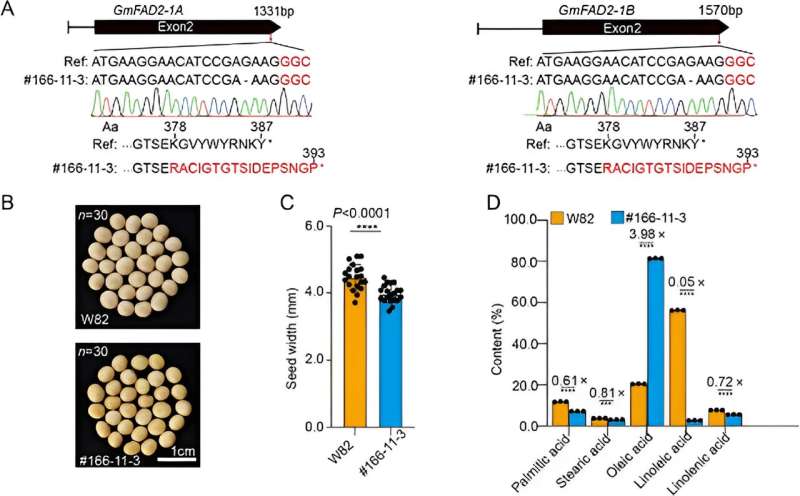This article has been reviewed according to Science X's editorial process and policies. Editors have highlighted the following attributes while ensuring the content's credibility:
fact-checked
peer-reviewed publication
trusted source
proofread
Breaking boundaries: PAM-less genome editing in soybean

CRISPR-Cas9 has transformed crop genetic improvement, yet its reliance on specific protospacer adjacent motif (PAM), sequences limits editing scope and efficiency. In soybean, a critical source of protein and oil, these limitations hinder the development of high-quality, high-yield varieties.
As conventional breeding methods struggle to keep pace with demand, there is a pressing need for advanced genome editing tools that bypass PAM-related barriers, unlocking the full potential of precise genetic enhancements in soybean.
The study, led by researchers at the Northeast Institute of Geography and Agroecology, Chinese Academy of Sciences, and published in Horticulture Research, introduces a CRISPR-SpRY-based PAM-less editing system that successfully circumvents the limitations of traditional genome editing.
This breakthrough allows for broader application in crop improvement, enhancing the efficiency and precision of genetic modifications in soybean breeding.
Researchers developed a novel SpRY protein-based editing system that removes the need for specific PAM sequences, targeting key agronomic genes like GmLOXs and GmFAD2-1A/B. The study demonstrated that SpRY could achieve precise mutations at previously unreachable sites in the soybean genome.
Additionally, the introduction of SpRY-based base editors enabled cytosine-to-thymine and adenine-to-guanine conversions, enhancing editing accuracy. The high efficiency of SpRY across multiple loci broadens the soybean genome editing landscape, providing a robust tool for molecular breeding and functional genomics.
Dr. Xianzhong Feng, senior author, noted, "The SpRY system represents a pivotal advancement in crop genome editing. By removing the restrictive need for PAM sequences, we can target previously inaccessible sites, significantly boosting precision and flexibility in breeding. This technology is poised to revolutionize soybean genetic improvement and provide new breeding resources."
The SpRY genome editing system holds promising implications for soybean breeding and genetic research, enabling accelerated development of high-yield, superior quality varieties. Its capability for base editing expands functional genomics research, allowing precise modifications to enhance agronomic traits.
Beyond soybeans, this technology can be adapted to other crops, contributing to sustainable agriculture and global food security.
More information: Xiao Chen et al, Advancing PAM-less genome editing in soybean using CRISPR-SpRY, Horticulture Research (2024). DOI: 10.1093/hr/uhae160
Journal information: Horticulture Research
Provided by Chinese Academy of Sciences





















